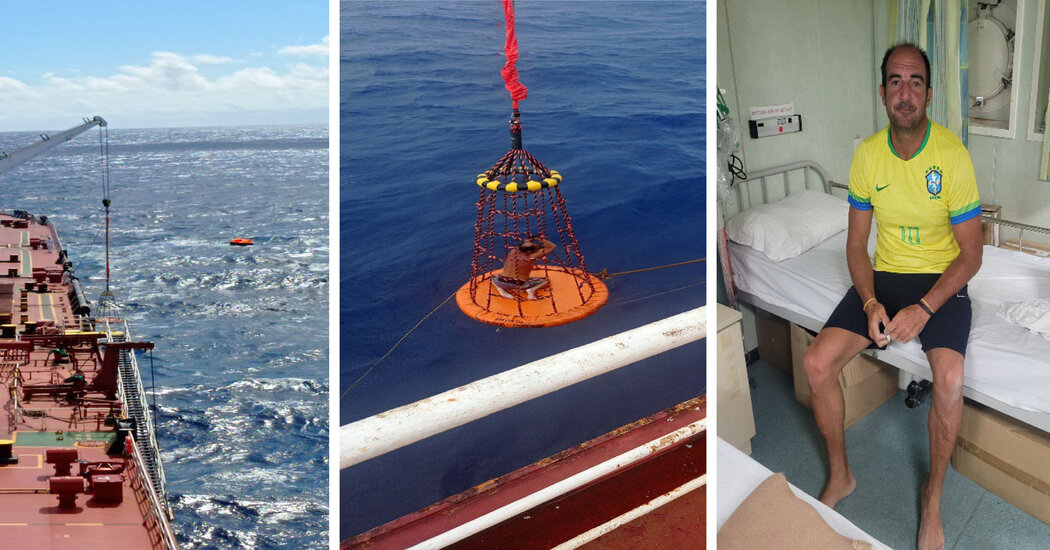After his 23-foot rowboat lost battery power in mid-May as he tried to circle the globe, Aaron Carotta spent more than a month at the mercy of ocean currents that pulled him across the Pacific.
Then, when a giant wave knocked his vessel upside down, he inflated a leaky life raft and immediately activated an emergency satellite beacon. He didn’t have much time to wait for help: Water was pooling at his ankles, he was shivering with hypothermia, and a shark was circling nearby.
But a few hours later, a United States Coast Guard plane came into view — the first aircraft that Mr. Carotta, 45, had seen in more than 80 days — and set a rescue in motion.
“It was a sight for sore eyes,” Mr. Carotta said on Tuesday, a day after a merchant ship that had plucked him out of the water dropped him off in Hawaii. He had set off from Panama in February on a mission to circumnavigate the globe.
Newer satellite technologies, especially Starlink internet systems operated by the rocket company SpaceX, have dramatically improved the odds that people lost at sea will be found. In March, for example, a Starlink connection helped rescuers find the crew of a sailboat that had capsized after colliding with a whale in the Pacific.
But older satellite rescue technologies can still be highly effective, as they were in Mr. Carotta’s case. In 2021 alone, nearly 2,500 people were rescued as a result of maritime notifications through the international satellite network known as Cospas-Sarsat. The network is used by search and rescue authorities around the world, and its notifications are automatic and instantaneous.
“That’s the beauty of the system,” said Douglas Samp, who oversees the Coast Guard’s search and rescue operations in the Pacific.
Mr. Carotta’s life as an adventurer began around 2008, when he was diagnosed with testicular cancer and quit his job as a real-estate appraiser “with the hopes of finding a more purposed path,” as he later wrote. He beat cancer and spent six years traveling to dozens of countries, doing charity work and supporting himself as a freelance television producer and presenter.
After a series of personal and professional setbacks, Mr. Carotta, who is from Louisiana, decided to take on ambitious, water-based expeditions. One was a 5,000-mile solo canoe trip from Montana to Florida. Another was his planned circumnavigation of the globe, which he…
Click Here to Read the Full Original Article at NYT > Travel…
